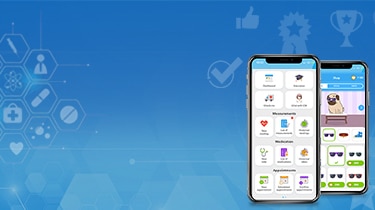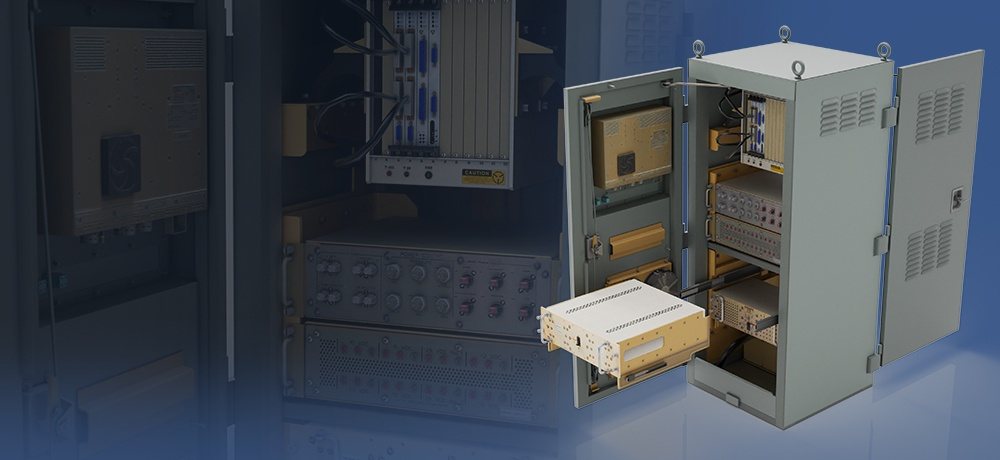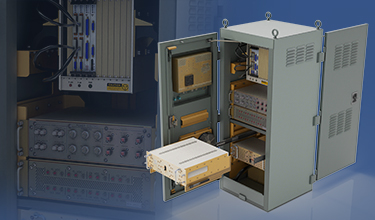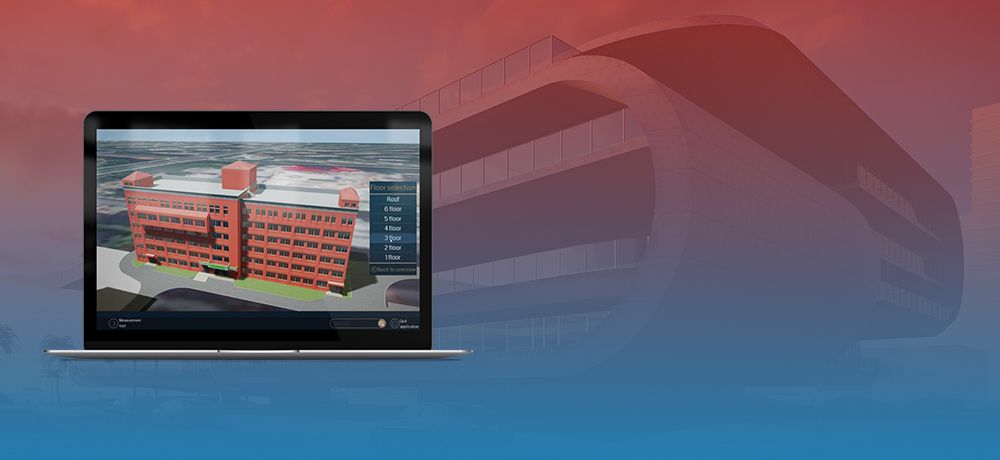
- ServicesCustom software development and consulting services we provide
- Solutions
- ExpertiseCustom-tailored solutions for enterprises and beyond, proven over 25+ years in business
- IndustriesKey industries and verticals we serve across countries and project types
- PortfolioLearn how hundreds of businesses succeed with the help of Program-Ace
- Who we areLearn how we differ from other R&D companies and why 150+ business owners trust us
- Knowledge Center
- Careers
- Contact Us
Nearshore Software Development Services
Looking for Nearshore Software Development Services?
At Program-Ace, we've distinguished ourselves as a top-tier nearshore software development company, proficiently straddling the line between cutting-edge technology and practical business solutions. Our team of seasoned nearshore software developers is dedicated to understanding your unique business needs and translating them into robust software solutions. We offer unparalleled technical expertise, customer-centric service, and innovative problem-solving capabilities.
With Program-Ace, you’re not just outsourcing your software development needs but forming a strategic partnership that fosters success, fuels growth and drives digital transformation. Trust us to keep you ahead of the curve, empowering your business with tailor-made software solutions that are timely, on budget, and of premium quality.
Nearshore Software Development Services We Provide
Our Nearshore Software Development Process
Benefits of Nearshore Software Development
How We Did It Before
















































































Why Choose Us for Nearshore Software Development
Through our long history in the industry, we have encountered and resolved dozens of challenges stalling product delivery. Nowadays, we leverage this knowledge to ensure the most optimal development process.
Our seasoned professionals employ advanced management and development methodologies to minimize technical risks. Our focus on preventive measures and careful planning ensures the smooth, successful execution of your software projects.
With Program-Ace, your software development burden is lightened. We handle the intricate technical processes all the way up to the finish line, allowing you to focus on your core business operations and strategic growth.
We thoroughly assemble our team with top professionals to tackle your unique challenges. Our talent pool consists of IT enthusiasts with significant experience who constantly work to expand their expertise and stay ahead of the curve.
FAQ
Nearshore software development is an outsourcing model where businesses partner with companies in nearby countries for their software development needs. The aim is to take advantage of geographic proximity, similar time zones, and cultural similarities to make collaboration more accessible and efficient. This model enables businesses to augment their in-house development teams with the expertise of external developers without the constraints associated with long-distance communication and significant time zone differences.
In contrast, offshore development refers to outsourcing software development tasks to a third-party company or team in a far-off country. While this model often offers more substantial cost savings due to lower labor rates in those regions, it also comes with unique challenges. These include significant time zone differences, which can lead to communication delays and reduced project control, and cultural differences, which can impact the understanding and alignment of project goals.
The critical distinction between the two lies in their geographical and temporal proximity to the client. Nearshore development partners are often in the same or closely aligned time zones as the client, which simplifies real-time communication, fosters better collaboration, and aids in faster decision-making. This proximity can also reduce travel time and costs if on-site visits become necessary. Furthermore, nearshore developers are likely to share a closer cultural affinity with the client, leading to a better understanding of business contexts and market nuances.
Offshore development, while potentially more cost-effective, usually involves collaborating with teams halfway worldwide. While modern technology mitigates some communication challenges, the significant time zone differences can often lead to delays and slower feedback cycles. Additionally, cultural differences can sometimes lead to misunderstandings or misinterpretations of project expectations, requiring extra effort to ensure everyone is aligned.
Regarding costs, nearshore software services might seem less competitive than offshore due to higher labor costs in nearby countries. However, the enhanced communication, collaboration, and control afforded by nearshore development often lead to increased productivity and efficiency, which can offset the slightly higher costs. Moreover, the risk of misunderstandings and miscommunications — which can result in costly project delays or rework — is often significantly reduced in nearshore models.
While both models have their unique benefits and challenges, the choice between nearshore and offshore development largely depends on the specific needs and circumstances of the business. If real-time communication, close collaboration, and cultural affinity are high on your priority list, nearshore software development would likely be the more suitable option.
On the other hand, if cost savings is the primary objective, and you're equipped to navigate the challenges of working across significant time zone differences and cultural gaps, offshore development might be the better choice.
However, it's also worth considering the potential for a hybrid approach, which involves leveraging the best of both models. For instance, core, high-priority development tasks that require frequent collaboration and swift decision-making could be nearshored. In contrast, more standalone, well-defined tasks could be offshored to maximize cost savings.
In summary, nearshore software development presents an excellent middle-ground solution that offers a blend of cost-effectiveness, efficient communication, cultural compatibility, and convenient time zone alignment. While it may not offer the same level of cost savings as offshore development, the overall value derived from nearshoring often outweighs the slightly higher costs, making it an increasingly popular choice for businesses looking to outsource their software development needs.
For businesses based in North America, especially the United States and Canada, nearshore software development often involves partnering with companies in Latin America and the Caribbean. Countries like Mexico, Brazil, Argentina, and Colombia have thriving IT sectors with a wealth of software development talent. Their relative proximity to North America and mainly overlapping working hours make them attractive nearshore partners.
For businesses in Western Europe, Eastern European countries such as Ukraine, Poland, Romania, and Slovakia are often popular choices for nearshore development. These countries strongly emphasize technical education and boast numerous highly skilled software developers. The relatively small time difference makes communication and collaboration much more accessible than with farther-flung locations.
For Asia-Pacific countries, including Australia, Japan, and Singapore, nearshore options might include other Asian countries like Vietnam, the Philippines, and India. While the time differences are a little more pronounced, the strong technical capabilities in these countries and lower labor costs make them attractive nearshore development partners.
For any company considering nearshore development, there are numerous factors to consider. The potential partner's technical expertise, cultural compatibility, English proficiency, IP laws, and economic stability are just a few considerations beyond mere geographical proximity.
It's important to note that the concept of nearshoring is more about relative proximity than specific geographic locations. A nearshore partner for a company in the US could be an offshore partner for a company in Europe, and vice versa. The choice of nearshore location will depend heavily on the specific needs and context of the business, as well as the nature of the project or tasks being outsourced.
While this overview provides a broad idea of the typical regions for nearshore development, the reality is that software development is a global industry, and businesses can and do partner successfully with companies worldwide. The most significant thing is finding a partner who understands your needs and can work effectively with your in-house team to deliver high-quality software solutions. In the digital age, geographical boundaries are less of a barrier than ever before, opening up a world of opportunities for businesses to tap into global talent and expertise.
Ensuring the quality of nearshore software development involves strategic planning, diligent oversight, and the cultivation of strong relationships with your outsourcing partner. Here are some key strategies to ensure high-quality outcomes in nearshore software development:
Partner selection. The foundation of successful nearshore development starts with choosing the right partner. Look for a company with a proven track record, solid references, and a strong portfolio of completed projects. They should possess expertise in your project's specific technologies and methodologies. Also, consider their communication capabilities, cultural compatibility, and flexibility to align with your working hours.
Clear communication. The ability to communicate effectively is a crucial factor in any outsourcing arrangement. Regular, open communication helps keep everyone aligned on project goals, timelines, and expectations. This includes having clear, well-defined channels for communication, such as email, video conferencing, project management tools, and regular status meetings.
Detailed contracts and SLAs. Clearly define your project requirements, deliverables, timelines, and quality expectations in your contracts and Service Level Agreements (SLAs). A well-defined SLA can be a reference point for both parties, helping avoid misunderstandings and ensuring everyone knows what is expected.
Frequent check-ins and reviews. Regularly review progress and performance against project objectives and KPIs. This will help you identify any issues or discrepancies early, allowing for swift course correction.
Established quality assurance (QA) process. Your nearshore partner should have robust QA processes in place to ensure the quality of their work. This includes things like code reviews, automated testing, manual testing, and performance testing. Ask about their QA processes during the selection phase.
Cultural compatibility. Ensure your nearshore partner understands your business culture and local market requirements. Cultural alignment can enhance communication and make collaborations more effective, leading to better end results.
Project management. Utilize sound project management practices, such as Agile methodologies, to ensure tasks are completed on time and within budget. A dedicated project manager can help oversee the project, coordinate tasks, monitor progress, and ensure the project stays on track.
Continual improvement. Encourage a culture of continual learning and improvement. Regularly gather feedback from your in-house and nearshore teams to identify areas for improvement. Use this feedback to improve processes, communication, and collaboration practices.
Security measures. Confirm that your nearshore partner has strong data security measures in place to protect your intellectual property. This includes technical measures like firewalls and encryption and organizational measures like access controls and security policies.
Employee development. Invest in the ongoing development of your nearshore team. Providing training opportunities and career development can help improve their skills, boost morale, and increase their commitment to delivering high-quality work.
Relationship building. Foster a robust and healthy relationship with your nearshore partner. Treat them as an extension of your in-house team rather than a separate entity. This can improve collaboration, increase mutual understanding, and improve project outcomes.
Ensuring the quality of nearshore software development involves more than just technical oversight; it requires strategic planning, diligent management, and the cultivation of strong, collaborative relationships. Following these strategies can increase the likelihood of a successful, high-quality outcome for your nearshore software development projects.
Language barriers can present significant challenges in any form of international business collaboration, including nearshore software development. However, with the right strategies in place, nearshore development teams can effectively manage and mitigate these issues to ensure clear communication and successful project outcomes.
Proficiency in international business languages. Many nearshore development companies prioritize proficiency in international business languages, mainly English, among their staff. They often invest in language training for their employees to ensure they can communicate effectively with international clients. Many developers have strong English language skills in regions such as Eastern Europe and Latin America, which are popular nearshoring locations for Western European and North American companies.
Clear communication protocols. Establishing clear communication protocols minimizes misunderstandings and ensures all parties are aligned. This might include setting guidelines for how and when to use different communication channels, creating shared glossaries of technical terms and project-specific jargon, and using visual aids and demonstrations to clarify complex concepts.
Utilizing translation tools. Technology advancements have made translation tools more sophisticated and accessible than ever before. Tools like Google Translate can provide quick and reasonably accurate translations for text-based communications, while real-time translation services can facilitate more transparent communication in video conferences and meetings.
Cultural training. Understanding the nuances of a language goes beyond vocabulary and grammar; it also involves understanding cultural contexts and norms. Many nearshore companies provide cultural training to their employees to help them communicate more effectively with clients from different cultural backgrounds.
Frequent and regular communication. Regular communication helps build familiarity and understanding over time. Scheduling regular check-ins and updates can ensure that any miscommunications or misunderstandings are quickly identified and addressed.
Documentation. Providing thorough, clear documentation in a mutually understood language can significantly reduce the risk of miscommunication. This is especially important for complex or technical aspects of a project.
Hiring bilingual project managers. Some nearshore companies employ bilingual project managers who can communicate effectively with the client and the development team. These project managers can act as a bridge between the two parties, facilitating clear communication and ensuring everyone is aligned.
Feedback loops. Encouraging open feedback can help identify and address any communication issues early on. Regular retrospectives or feedback sessions can provide valuable insights into how communication can be improved.
Dedicated communication training. Many companies invest in specific communication training for their staff, covering areas such as technical language, business communication, and intercultural communication skills.
Use of universal coding standards. Some universal standards and practices transcend language barriers in the realm of coding. By adhering to these standards, developers can ensure that others understand and maintain their code, regardless of language.
By implementing these strategies, nearshore software developers can effectively manage language barriers and ensure clear, effective communication throughout the project lifecycle. Despite the challenges, the benefits of nearshore development, including cost savings, access to a broad talent pool, and flexible scalability, often make it a worthwhile choice for many businesses.
With diligent attention to communication practices and a commitment to understanding and bridging language differences, nearshore teams can provide high-quality, effective software development services to their international clients.
Program-Ace utilizes an adaptive pricing model to accommodate various types of software development needs, ensuring clients have access to quality nearshore software services tailored to their unique requirements. Our pricing depends on our clients' business engagement model, aligning with their specific project demands and organizational structures.
Our project-based model is ideal for clients with clearly defined project requirements. In this model, we provide a dedicated development team to bring your vision to life. Pricing for this model is based on the project's complexity, the skills required, and the timeline for completion. This model offers a fixed-price approach, meaning you know the total cost upfront, fostering a sense of transparency and predictability.
Alternatively, our dedicated team model provides a hand-picked team of technical specialists who are deeply invested in your project. Pricing is determined by the size and composition of the team, the nature of the project, and the duration of their involvement. This model follows a retainer-based pricing system, charging for the team's capacity on a regular basis, allowing you flexibility and control over costs without sacrificing the quality of the work.
Lastly, our outstaffing model, which offers expert technical staff to integrate into your existing team, follows an hourly or monthly pricing model. The cost will depend on the expertise level of the professionals required and the duration of their commitment to your project. This model provides a cost-effective solution to fill specific skills gaps in your team, ensuring you have the right expertise on board when needed.
At Program-Ace, we emphasize transparency, flexibility, and quality. We believe in providing our clients with superior customer experiences and solutions that meet their exact needs. Our multifaceted pricing model for nearshore software development services ensures that we can tailor our expertise to suit your requirements and budget best.
















Representatives: Germany, Poland, Ukraine,
USA, Canada, UAE
USA: +1 888 7016201
- Expertise
- Metaverse Development
- Metaverse Consulting
- Augmented Reality App Development
- Virtual Reality App Development
- Mixed Reality App Development
- Product Configurator Development
- Virtual Training and Simulation Development
- Digital Twin Development
- Digital Twin Consulting
- 3D Visualization Services
- Enterprise Gamification Solutions
- Game Development Services
Discover more on our website:



